choicest magnolias and how to prune them, with andrew bunting
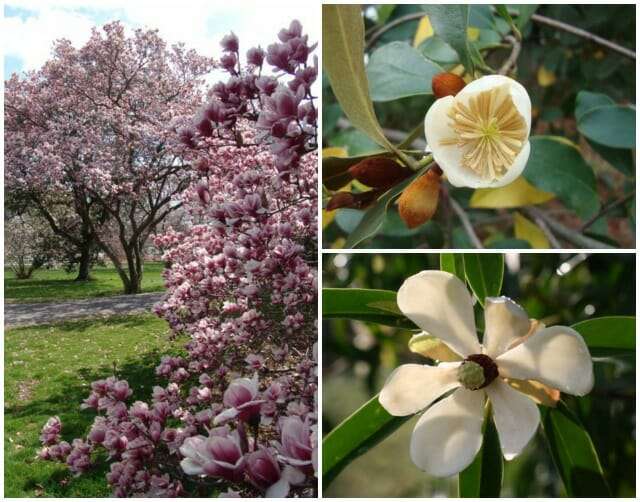
basic magnolia care
FULL SUN (or light shade in hotter zones), and well-drained soil that’s high in organic matter is the basic regimen (though the sweetbay magnolia, M. virginiana, can also take a wet spot). Give the others those requirements, plus a light layer of aged organic mulch, and they generally will thrive. Fertilizing isn’t needed, says Andrew. (At Scott they only mulch the circles of trees in lawn areas, using a combination of leaf compost and one-year-old composted wood chips.)
Magnolias are not the easiest to plant under, however, because of their fleshy, moisture-hogging root systems. “Some plants that can take dry shade will make a go of it,” he says, suggesting Epimedium, or Asarum, or Christmas fern. Among bulbs, try Scilla, or Chionodoxa, or even toadlilies (Tricyrtis), he recommends.
Magnolia grandiflora, the so-called Southern magnolia, is the toughest of all to underplant—since it has not just those roots, but also evergreen foliage to limit water that reaches the area underneath.
Though magnolias are generally tough, various species of scale insects can be an occasional pest at the Scott Arboretum, which is just outside Philadelphia (information on the collection, and visiting).
I’d add yellow-bellied sapsuckers as a formidable opponent, and one is on the verge of killing the second of my two big old magnolias, and has offed other ornamental tree species here. Andrew confirms that the bird does like magnolias, which is why I sadly will not be replacing mine.
The basics of magnolia planting and care, from the Magnolia Society
 magnolia pruning
magnolia pruning
THOUGH MAGNOLIAS generally need little pruning, there are two things to keep a particular eye out for: Since almost all magnolias are still sold as grafted plants, Andrew says, be sure to prune out any shoots that may sprout at the base, emerging from the rootstock.
Likewise, get rid of water sprouts—technically called “epicormic shoots,” he says (photo above of one)—that form as vertical growth on branches, especially on the saucer types. At Scott Arboretum, epicormic shoots are removed in late winter.
Otherwise: “We do selective pruning, just to shape them up or limb them up over time as desired.”
The Scott’s specimens of the Little Girl series of magnolias, for instance, came to the garden in 1968, when the eight shrubby, smallish new varieties (reaching maybe 12-20 feet, a good home-garden size) were introduced by the U.S. National Arboretum. The surviving plants really haven’t been pruned since—but rather allowed to just develop into their natural shapes. (One of them, ‘Betty,’ is in the photo at the bottom of the page.)
Sometimes, though, you want a magnolia to fit a particular garden need or space.
“I have seen ‘Galaxy’ shaped as a street tree, for example,” says Andrew, “limbed up so its head begins 5 or 6 feet off the ground.”
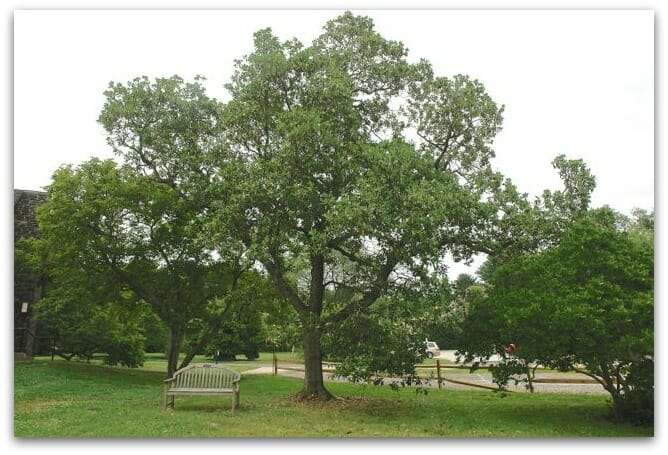
Perhaps the extreme of magnolia pruning, says Andrew: Try creating an espalier with a grandiflora type (where hardy and reliably evergreen, of course–typically Zone 7ish, perhaps 6B, or milder).
a few choice magnolias, from andrew bunting
BY NO MEANS an exhaustive list, what follows is instead the result of an impromptu chat the other day—some highlights, not an encyclopedia. A link to sources that sell some of the lesser-known types is at the bottom of the page.
For pure fragrance: Magnolia virginiana or grandiflora.
Want a native species? Many magnolias are Asian, but seven or eight are North American natives, including acuminata (the so-called cucumbertree magnolia); tripetala; macrophylla and macrophylla subspecies ashei (below, flower detail; tree at bottom of the page); grandiflora; virginiana; fraseri, and pyrimidata.
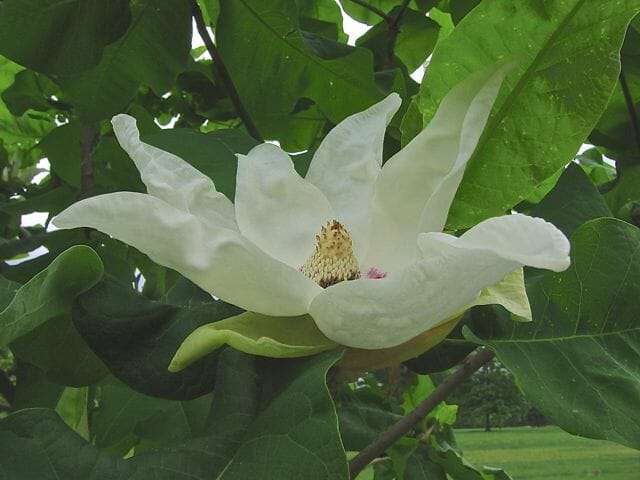
To view from below (as if planted on a wall, above a pathway): Magnolia sieboldii has pendant, fragrant flowers with a boss of purple inside; great to walk beneath it when in bloom.
Yellow flowers? ‘Butterflies’ (below) with up to 16 primrose yellow tepals, is a particular beauty.
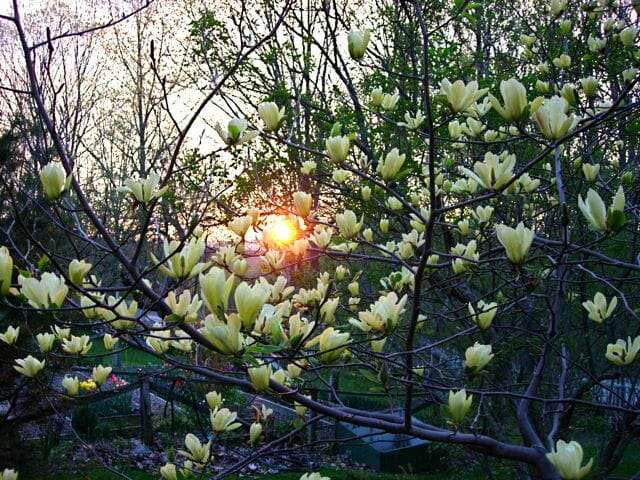
Dark-colored flowers? ‘Galaxy,’ ‘Randy,’ Magnolia x soulangiana ‘Lennei’, plus ‘Genie’ and ‘Black Tulip’ are some choices.
For tropical-looking foliage: M. macrophylla subspecies ashei (foot-long leaves and fragrant flowers, but on a tree to only 12 feet–photo at the bottom of the page); fraseri; tripetala (the so-called umbrella magnolia, which Scott Arboretum has grown since 1932).
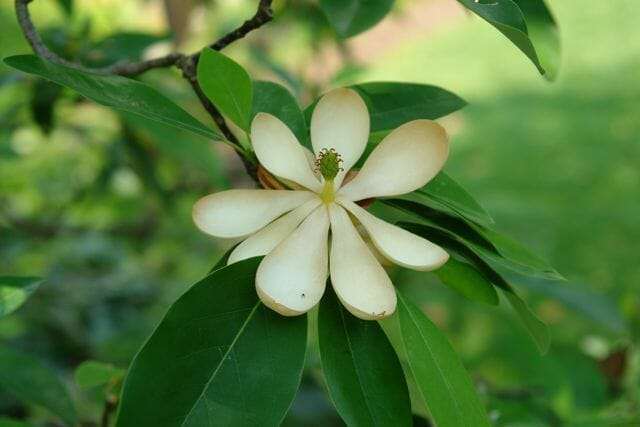
About grandiflora types, in particular (which Andrew also admires for their showy seedpods):
- Hardier grandlfiora types for Zone 6ish gardens: ‘Edith Bogue,’ an older hardy selection, has been growing on Swarthmore campus since 1961; ‘D.D. Blanchard’ and ‘Pocono’ are recommended for excellent cold hardiness.
- A favorite diminutive grandiflora: ‘Kay Parris’ (smaller in form, leaf, flower, etc.).
- For best indumentum (the fuzzy cinnamon coating on the leaf undersides of various grandiflora types): ‘D.D. Blanchard’ and ‘Bracken’s Brown Beauty.’
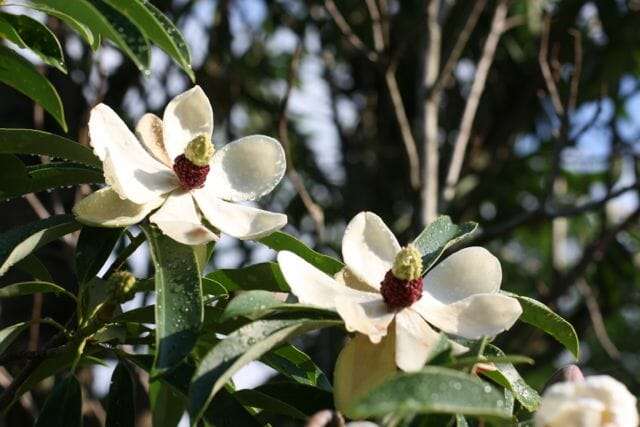
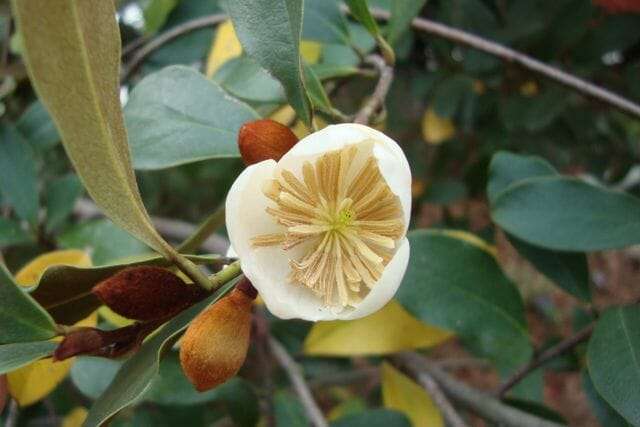
 magnolia shopping: sources, and more
magnolia shopping: sources, and more
WHERE TO BUY choice magnolias like these by mail, if your local nursery doesn’t have them? The Magnolia Society has a list of vendors. (Above: ashei, left, and ‘Betty,’ one of the Little Girls, right.)
- Visit Scott Arboretum’s Facebook page and website, or the Magnolia Society International website.
(Photos courtesy of Andrew Bunting and Scott Arboretum, except M. laevifolia and M. yuyuanensis, courtesy Aaron Schettler. Yellow magnolia and epicormic shoot detail from A Way to Garden.)


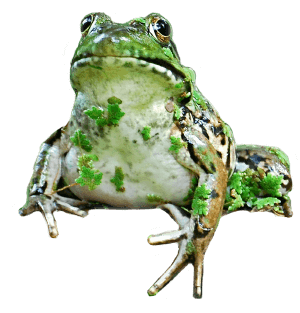
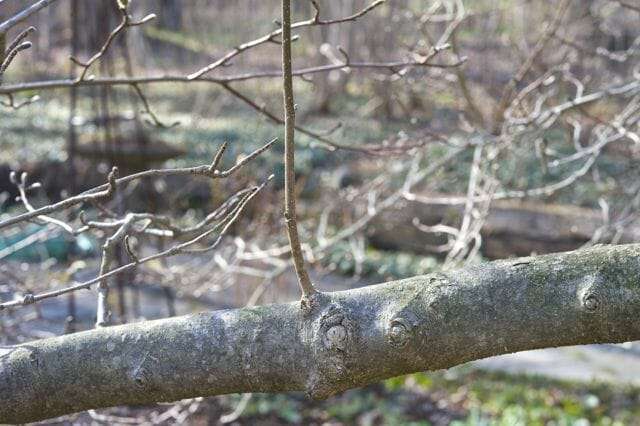
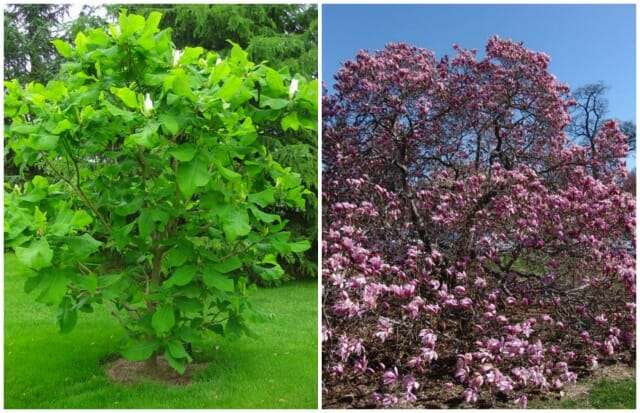


thanks for this, margaret – a great companion to your podcast last year with adam wheeler. i’m currently ordering a few magnolias to round out my property (and keep my x ‘Butterfles’ company) and this will be a great resource.
Ahh yes! There are so many hybrids now! And the Michelia group have been moved in the magnolia taxa!
Very nice information. What is the best one to plant in Pacific NW along the Hood. Canal where we gets lots of rain and Zone 7ish. Is there an evergreen magnolia that will live here. I havent had any luck with the ones that I have planted except for star magnolias. Thank you
Wow – once again, perfect timing for me! I’m looking for a magnolia tree for my yard, to replace an old pine that’s dying out (just had it cut down – and unexpectedly, tears came to my eyes when it fell… sigh)
I think a magnolia would be beautiful in all seasons – the shape of its limbs in the winter, the early spring flowers, its lovely shade in the summer, and yellowing leaves in fall. I think I’ll get one of those Magnolia x soulangiana trees, since I only have room for one right now.
Thanks always for the perennial wealth of gardening information!
Margaret, I have a friend who planted a yellow variety Magnolia. It didn’t take too many years before the blooms were white and not yellow anymore. I do not know the variety she planted. Any idea what she can do or if this is preventable? Thank you!
If it was a young tree, and had been grafted, the understock (rootstock) might have been a white variety and allowed to sprout and develop (which is why Andrew said to be sure to always cut off those suckers as they appear!). I cannot think of another reason why a variety would change color. It happens all the time with roses — they were one color (say, yellow), and then rootstock emerges and develops and a cold winter kills a lot of the desired stems, and suddenly you have a red rose instead.
Wonderfully informative! I have to ask, is there NOTHING that can be done to repel the yellow bellied sapsucker? I have been loosely wrapping my smaller trees, white birch, in torn sheets, but with so many young trees, it is a formidable job. Unwrapping for the winter, re-wrapping in the spring… any hope out there?
Hi, Wendy. If I block them from one tree (or one trunk of a favored tree) they just choose another victim. And I have many old trees that they love (25-goot magnolias with 4 or 5 trunks each, for instance) — meaning this is work on a ladder and not easy…and again, then the bird(s) just move on to a Viburnum or a pine or something. Tree farms get special permits to shoot the birds, I kid you not. Of course I would not do that. And the “experts” all say that even if you did that, another sapsucker will move in to use the trees.
I was hoping for some comments about pruning my favorite, a star magnolia, although the deer chomp on it every year anyway so it is getting a pruning of sorts! They also take most of the flower buds….MUST circle with burlap next fall.
The leaves of our ten feet tall Edith Bogue and Brown Bracken magnolias turned bronze this
winter. As we know, the cold in the Midwest was terrible. The leaves under the snow line remain deep green. When I scratch the branches, there appears to be life there.
My question – will leaves return? Are my beautiful trees dying? Is there anything I can do
to support them?
Thank you for spotlighting Magnolias!
I just planted 3 Michelia yunnanensis Free Spirit in my zone 7B garden late last summer, then read they are good to zone 8. Uh oh! We had a colder than normal winter here in Raleigh, NC (or at least colder than the past 10-14 years), and I am happy to report these evergreen groundcover magnolias not only survived 7 degrees on two different occasions and 9 on a third, but started blooming April 19, about a week after the dogwoods were in full bloom. VERY fragrant white blossoms. Love them! And no winter burn on the leaves, either! One more plus, the deer who ate everything else this hard winter left them completely alone.
I have a yellow magnolia–not sure of the variety. I prune it like mad in very early spring. I don’t want another tall shade tree in my backyard. It almost looks like an umbrella. Last year a family of robins nested in it, and I’m hoping they’ll return. Anyway it is beautiful when it blooms and just the size I want. The leaves are quite large and turn a copper color in the fall. Maybe someone can tell me what variety it is.
Actually after looking at your pictures, I think it is a Butterfly. Thanks.
I also have a Star Magnolia. It’s in a lot of shade, but blooms enough. I planted it because we have a dark brick house and it doesn’t matter if it doesn’t grow big.
I have a star magnolia that’s about twenty yr. old. It has white mold spots on all the branches, and it’s dripping a black sticky liquid witch has turned all the mulch under it black. What is happening to my white star magnolia. Thank you
Hi, Mike. Try this pdf from Cornell, or search for Magnolia scale.
Margaret” thank you for answering my question about my star magnolia.
I have a X Randy Magnolia. It blooms before it gets leaves. But then after it gets it leaves, it blooms again. It is Sept. 2, and I just found another new bloom. Is this normal? It is surely wonderful!
Yes, some magnolias do rebloom. Lucky you! Can be different amounts of that in different weather years/conditions, I think, too.
Against all good sense I am going in to take out the lowest branches Sweetbay Magnolia in the back yard. It is well-established, more than 20 yrs old, but blocks access to the furthest part of our little quarter-acre. Have read numerous sites nearly all with the same advice: Don’t.
Will let you know how it works out.
I want to know if you should prune an Edith Bogue magnolia? Mine is about 8 to 9 years old. It is getting rather “bushy”. It is more a bush than a tree.
Hi Bonnie. Southern magnolias are wider at the base than top, more pyramidal. Typically to dictate a different shape from the one it will take on its own unpruned, they are trained (by removing some stems completely) early in their lives. Without a photo it is hard to tell what you are up against (and how tall is it)? You could email at awaytogarden @ gmail dot com.
Can you give me the name of a evergreen Magnolia that has pink bloom and lives in Virginia?
I don’t know of a pink-flowered Magnolia grandiflora (Southern magnolia), which is the evergreen species, but I suspect you could find out if there is one from one of the nurseries recommended on the Magnolia Society International website at this link.